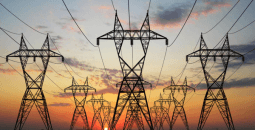

As it approaches 100 days without load shedding, Eskom is eyeing an average tariff increase of 36% next year. This follows a 12% increase this year, compared to the inflation rate of 5.2%.
This will be part of its sixth multi-year price determination (MYPD6) methodology application for the three years to 30 April 2028. For the outer years, it will be asking for less – an average increase of almost 12% in 2026/27 and 9% in 2027/28.
This has been disclosed in a draft application that has been circulated to National Treasury and the South African Local Government Association (Salga) before it is submitted to energy regulator Nersa. Eskom is legally obligated to consult with the two bodies before formally applying to the regulator.
The public will have an opportunity to interrogate the application during a public consultation process once it is on Nersa’s desk.
If approved, Eskom’s allowable revenue will increase from R335 billion in the current year to R445 billion in 2025/26.
The increase for municipalities will be almost 44%.
This increase is higher than the average to provide for the shorter recovery period. Due to the mismatch between the Eskom financial year starting every April and the municipal financial year starting in July, Eskom’s tariff increase for municipal bulk purchases kicks in three months later than that for its other clients.
The increased amount must, therefore, be recovered over nine instead of 12 months.
Eskom’s tariffs are based on its cost, provided this cost has been incurred efficiently, and a reasonable margin. In its tariff applications it therefore sets out its anticipated costs in detail.
Eskom’s biggest cost driver is its primary energy, including coal and diesel.
Although Eskom overspent on diesel in the recent past as its coal-fired power stations failed and it relied heavily on diesel-gobbling open-cycle gas turbines, it has reduced its diesel usage in the financial year to date by 67% compared to the same period last year.
It is expecting additional generation units to come online before the end of the year, which may further reduce the reliance on diesel.
The utility has long argued that its tariffs are not cost-reflective, and this has been confirmed by rating agencies. Recently the focus has shifted to investment in the transmission network, which is all but saturated in the Eastern, Western and Northern Cape, the provinces with the best resources for renewable generation.
Private sector investment
Former energy minister Kgosientsho Ramokgopa has made it clear that Eskom cannot develop the network at the pace that is required on its own. The private sector will have to participate.
Meridian Economics, however, clearly stated in a paper that the transmission tariff is too low to unlock private-sector investment in transmission.
Eskom CEO Dan Marokane recently announced that Eskom will be embarking on a path to build its own portfolio of renewable generation while also playing a role in gas generation and new small modular nuclear reactors.
He did say that while Eskom is trying to clean up its balance sheet, it may also utilise the balance sheets of other role players in developing the new projects.
The news of the huge increase Eskom wants to apply for comes despite a debt relief package of R254 billion granted by government to the utility last year.
The money will be made available over three years as loans and will only be converted to equity if Eskom complies with a list of conditions set by National Treasury.
Engineering News reported in February that Eskom’s failure to dispose of its Eskom Finance Company, which is one of the conditions, could see it forfeiting R4 billion of the debt conversion.
Eskom average tariff increases over the last decade
Listen to Jimmy Moyaha’s interview with independent energy analyst Chris Yelland in this SAfm Market Update with Moneyweb podcast: